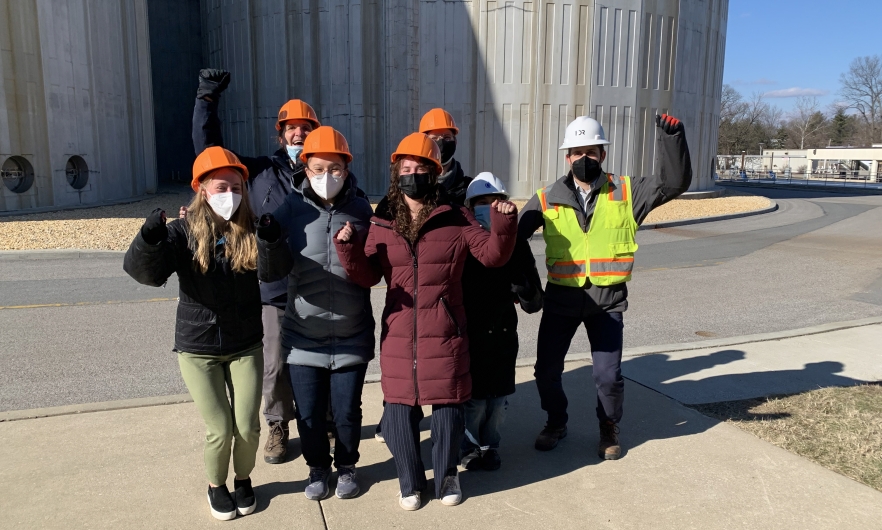Every spring, the Whiting School of Engineering hosts Design Day, an annual showcase of our students’ creativity, optimism, innovation, and ability to translate their theoretical knowledge into solutions to real-world problems.
One EHE team is helping a local water utility improve the way it turns biosolids into renewable energy.
WSSC Water, a Maryland water utility, is in the planning phase for a new biogas generation plant. This facility will take the combined biosolids outputs of five wastewater treatment plants and digest it to produce methane gas, which can be sold as a form of renewable energy.
However, the process produces significant quantities of organic phosphorus. If this byproduct is left untreated, it builds up and becomes struvite, a tough mineral buildup that can clog pipes and damage downstream processes. If phosphorus enters local water systems, it also has the potential to cause algal blooms and eutrophication. The Chesapeake Bay Watershed is currently in the process of updating its standards to further reduce the amount of phosphorus that enters the bay, and this project will put WSSC ahead of these regulations.
The PhosFATE team was charged with choosing a vendor and working with them and the client to plan a post-treatment system for biological phosphorus removal. This system will not only reduce struvite buildup but will eventually allow the plant to produce phosphorus-rich fertilizer to be sold to local farmers.
This real-world project involved cost analysis, flow and chemical mass balance work, and a lot of communication.
“We’ve learned a lot of problem-solving as far as making sure that everything is understood on all sides, making sure that the ideas that the vendor is communicating to us are the same concepts that were requested by WSSC,” said team leader Hana Escovar. “It’s opened our eyes to the real-world processes that we’ll be seeing once we get into our jobs.”
Team members are Escovar, Ella Baran, Madi Miro, and Mitchell Kleckner, and advisers Ciaran Harman and Hedy Alavi.

